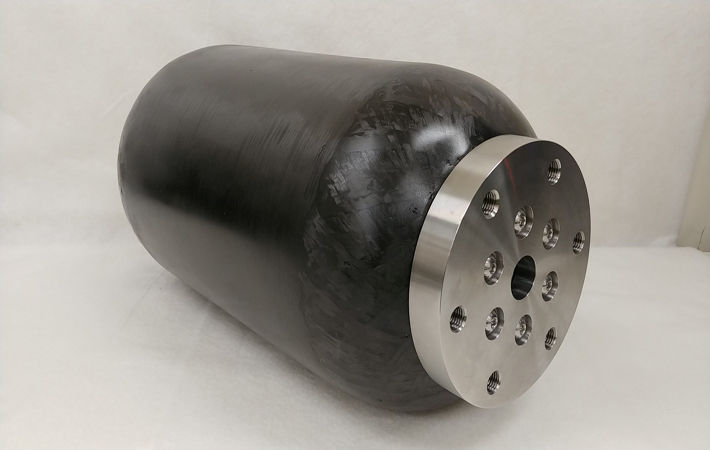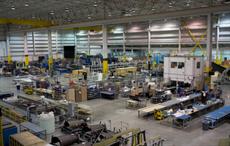Lockheed Martin, Australian manufacturer Omni Tanker and University of New South Wales have joined hands to develop composite tank technologies, for transportation and storage of liquid hydrogen for use on ground, in the air, underwater and in space. The project will be run through a grant from the government’s Advanced Manufacturing Growth Centre (AMGC).
The co-funded project, announced as part of AMGC’s Commercialisation Fund launch and worth a total $1.4 million, will utilise two revolutionary home-grown technologies to solve the challenges of using composites for the transportation and storage of liquid hydrogen with applications on ground, in the air, underwater and in space.Lockheed Martin, Australian manufacturer Omni Tanker and University of New South Wales have joined hands to develop composite tank technologies, for transportation and storage of liquid hydrogen for use on ground, in the air, underwater and in space. The project will be run through a grant from the government's Advanced Manufacturing Growth Centre (AMGC).#
Combining nano-engineering technology developed by University of New South Wales (UNSW) in partnership with Lockheed Martin and Omni Tanker, and Omni Tanker’s patented OmniBIND technology, the collaboration will result in the development of two new operational scale propellant tanks for storing cryogenic liquid fuels for commercial and civil satellite programmes: a “Type IV” fluoropolymer-lined carbon fibre composite tank and a “Type V” linerless carbon fibre composite tank, both of which are suitable for high pressures, the extreme cryogenic temperatures required for liquid hydrogen as well as oxygen, hydrogen peroxide and hydrazine.
Christopher Hess, head of Industrial Development, Lockheed Martin Australia acknowledged the support of AMGC and welcomed the opportunity for ongoing collaboration with UNSW and Omni Tanker. “Lockheed Martin invests millions of dollars every year into R and D programmes with our Australian industry and research partners to solve real challenges facing our Global Supply Chains,” he said. “We have had a long-standing research collaboration with UNSW and Omni Tanker, and we are grateful for the support of the AMGC as we now look to commercialise these cutting edge, Australian-developed composite tank technologies for a number of Lockheed Martin and NASA applications.”
David Ball, regional director Australia and New Zealand, Lockheed Martin Space, confirmed the development of composite tanks that are lightweight, cost-effective, and resistant to microcracking and permeation represents a unique and innovative technological solution with significant space applications. “As the world increasingly looks to hydrogen for emission-free energy, containing and transporting it in a safe, cost-effective and economic manner remains extremely challenging,” he said. “The space industry is particularly interested in the development of linerless composite tanks for their weight efficiency and durability, which represent the cutting edge of composite pressure vessel manufacturing.”
“These advances have the potential to support the growth of Australia’s sovereign space capabilities, strengthen exports to space-faring allies and partner nations, and make an important technological contribution to future space missions particularly in on-orbit storage, launch and deep space exploration,” he said.
“Creating a lightweight vessel for transporting liquid hydrogen at minus 253 degrees Celsius is no simple thing – whether you’re moving it along a highway or to outer space – but it’s Australian know-how that is making it possible,” said Dr. Jens Goennemann, managing director, AMGC.
“That’s why AMGC is supporting Omni Tanker and its collaborative partners to engineer and manufacture a solution to this problem and offer it globally,” said Goennemann.
The project builds on a recent invention by the research team at UNSW led by Professor Chun Wang, which enables carbon fibre composites to withstand liquid hydrogen temperatures without matrix cracks – a challenge that has, up until now, prevented mass-market adoption of these materials for such applications.
“This new technology is the result of an outstanding collaboration and partnership between UNSW, Lockheed Martin and Omni Tanker over the past four years. It is wonderful seeing our research achievement is now moving closer towards commercial success and generating social and economic impact in Australia and beyond,” said Wang.
Omni Tanker, with its significant experience in the development and commercialisation of strong, lightweight composite transport vessels, has the know-how and technology to translate the recent research innovations for a myriad of applications.
Omni Tanker’s CEO Daniel Rodgers said: “This next phase in our collaboration with Lockheed Martin and UNSW is a landmark development that sees Omni Tanker’s seamless thermoplastic lining technology enter the aerospace sector. The OmniBIND technology has made inroads to revolutionising the safe and efficient movement of challenging liquids within the chemical transport sector. Now the growing need to decarbonise the energy industry, and the re-usable low-earth-orbit satellite market, have the potential to drive major utilisation for these new technologies.”
“We are excited to work with Lockheed Martin and UNSW on this ground-breaking project, which leverages our patented technology. It is also a credit to the talented Australian engineering team that we have assembled at Omni Tanker,” said Omni Tanker’s chief technical officer Dr. Luke Djukic.
Fibre2Fashion News Desk (SV)


